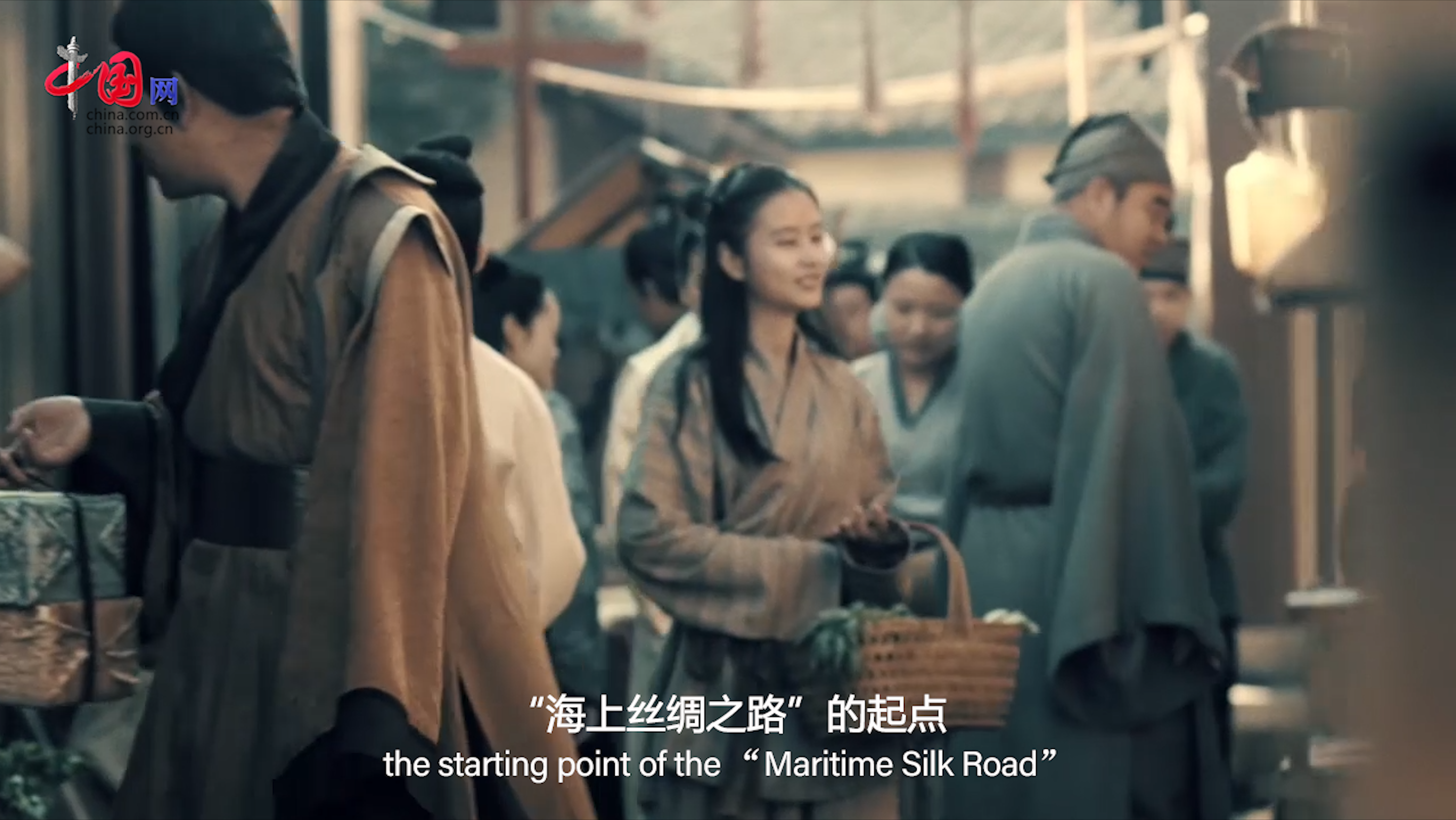泉州:宋元中国的世界海洋商贸中心
|
|
斑驳的砖瓦、古雅的老街、透着中原遗韵的方音......这就是泉州——“海上丝绸之路”的起点,宋元时期的“东方第一大港”,至今已有1700多年的历史。
Mottled bricks and tiles, quaint old streets, and dialects with the lingering traces of the Central Plains... This is Quanzhou, the starting point of the “Maritime Silk Road” and the “largest port in the East” in the Song and Yuan dynasties (the 10th - 14th centuries AD). Located in east China's Fujian Province, the coastal city has a history of more than 1,700 years.

2021年,第44届世界遗产大会在福建福州举行,这是中国第二次承办世界遗产大会。“泉州:宋元中国的世界海洋贸易中心”作为中国唯一申报的文化遗产项目,顺利通过审议,中国的世界遗产清单上再添一颗璀璨明珠。(字幕:中国世界遗产总数升至56项)
UNESCO accepted "Quanzhou: Emporium of the World in Song-Yuan China" , China’s only application, as a cultural property on its World Heritage List amid the ongoing 44th session of the World Heritage Committee held in Fujian’s capital city of Fuzhou. The newly inscribed cultural property brought the total number of the country's UNESCO World Heritage sites to 56.

宋元时期的“东方第一大港”
“The largest port in the East” in the 10th - 14th centuries AD
宋元时期,泉州海外贸易进入最繁荣的时期,与近百个国家密切通商,当时中国的丝绸、瓷器、茶叶,泉州特色的矿产、鱼盐、香料等从这里流向世界,同时形成与东南亚、东亚,乃至西方世界的文明交流。此次申遗的22个遗产点中,祈祷商船出海顺利的石刻、管理海洋贸易事务的行政机构、码头、灯塔等,帮助我们重现当时繁华的水陆交通网络。
During the Song and Yuan dynasties, the overseas trade of Quanzhou entered the most prosperous period, with close trade with nearly 100 countries. At that time, Chinese silk, porcelain, tea, Quanzhou minerals, fish salt, spices and others were sold from Quanzhou to the rest of the world, enabling exchanges with Southeast Asia, East Asia and even the West. The application comprises 22 historical relics including stone carvings that pray for the smooth sailing of merchant ships, administrative agencies that manage maritime trade affairs, docks and lighthouses. These sites help restore the bustling scenes of the land and water transportation network at that time.

多元社群的“世界宗教博物馆”
“The museum of the world’s religions” for diverse communities
宋代朱熹曾这样形容泉州,“此地古称佛国,满街都是圣人。”可见千年前泉州人文风气之盛。这里的“佛国”可能也不单指佛教。从古至今,泉州各种宗教文化荟萃,佛教、道教、伊斯兰教、摩尼教等都曾在这里传播,相互融合、吸收,和平共处。这也正是一个开放、多元、活跃的世界海洋商贸中心才会产生的文化包容力。
When Zhu Xi, a famous thinker of the Southern Song Dynasty, visited Quanzhou, he couldn’t help but express his admiration for the city’s rich cultural deposits in a verse, “This holy land of Buddhism is full of sages and saints.” Quanzhou was not only a land rich in Buddhism at that time. It has been a religious melting pot where different religions including Buddhism, Taoism, Islam and Manichaeism meet, merge and co-exist, echoing the cultural inclusiveness of an open, diverse and dynamic global emporium.

民营经济的乐园
A paradise for the private sector
泉州从历史继承下来的商贸基因,到了现代,进化成不断优化的营商环境,滋养着今天的泉州人。安踏、鸿星尔克、达利园、汇源果汁等“国货之光”都是从这里起家。泉州,被誉为“民营经济的乐园”。
The business gene inherited from the history of Quanzhou has evolved into a continuously improving business environment to nourish the people of Quanzhou today. Known as a paradise for the private sector, Quanzhou is home to many famous Chinese brands such as sportswear giant Anta and Dali Foods Group.
千年之后,泉州依然是一座活着的古城。申遗成功不是终点,恰恰是遗产保护迈向新时代的起点。
Over a thousand of years later, Quanzhou is still a living ancient city. The addition to the World Heritage list is not the end for heritage protection, but the starting point towards a new era.
